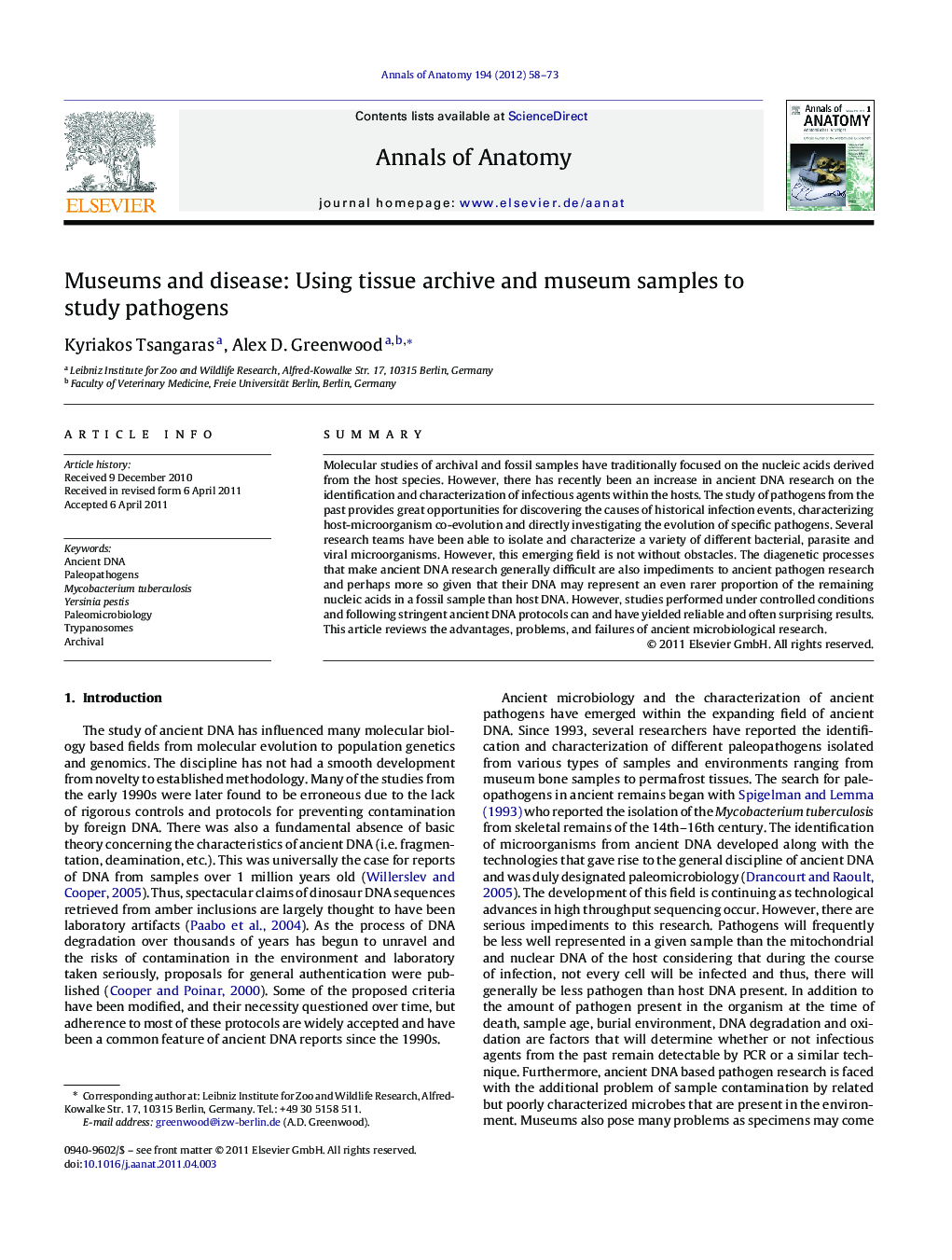| کد مقاله | کد نشریه | سال انتشار | مقاله انگلیسی | نسخه تمام متن |
|---|---|---|---|---|
| 8461873 | 1549017 | 2012 | 16 صفحه PDF | دانلود رایگان |
عنوان انگلیسی مقاله ISI
Museums and disease: Using tissue archive and museum samples to study pathogens
دانلود مقاله + سفارش ترجمه
دانلود مقاله ISI انگلیسی
رایگان برای ایرانیان
کلمات کلیدی
موضوعات مرتبط
علوم زیستی و بیوفناوری
بیوشیمی، ژنتیک و زیست شناسی مولکولی
بیولوژی سلول
پیش نمایش صفحه اول مقاله

چکیده انگلیسی
Molecular studies of archival and fossil samples have traditionally focused on the nucleic acids derived from the host species. However, there has recently been an increase in ancient DNA research on the identification and characterization of infectious agents within the hosts. The study of pathogens from the past provides great opportunities for discovering the causes of historical infection events, characterizing host-microorganism co-evolution and directly investigating the evolution of specific pathogens. Several research teams have been able to isolate and characterize a variety of different bacterial, parasite and viral microorganisms. However, this emerging field is not without obstacles. The diagenetic processes that make ancient DNA research generally difficult are also impediments to ancient pathogen research and perhaps more so given that their DNA may represent an even rarer proportion of the remaining nucleic acids in a fossil sample than host DNA. However, studies performed under controlled conditions and following stringent ancient DNA protocols can and have yielded reliable and often surprising results. This article reviews the advantages, problems, and failures of ancient microbiological research.
ناشر
Database: Elsevier - ScienceDirect (ساینس دایرکت)
Journal: Annals of Anatomy - Anatomischer Anzeiger - Volume 194, Issue 1, 20 January 2012, Pages 58-73
Journal: Annals of Anatomy - Anatomischer Anzeiger - Volume 194, Issue 1, 20 January 2012, Pages 58-73
نویسندگان
Kyriakos Tsangaras, Alex D. Greenwood,